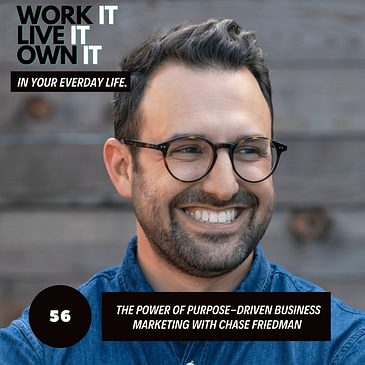Chase Friedman, founder of Vanquish Media Group, shares his insights on integrating social impact with business success. He believes that every business has the ability to do good and do well, and standing up for what you believe in is becoming a necessity in today's marketplace. Chase emphasizes the importance of building a strong brand foundation and being clear about your story, messaging, and values. He provides an example of a nonprofit organization, the Brain Aneurysm Foundation, that saw significant growth and engagement by reframing their messaging to be more approachable and relatable. Chase also discusses the metrics for evaluating the effectiveness of purpose-driven initiatives, including customer lifetime value, brand equity, and employee engagement.
Takeaways
- Every business has the ability to do good and do well by integrating social impact with business success.
- Building a strong brand foundation and being clear about your story, messaging, and values is essential for sustainable growth.
- Reframing messaging to be more approachable and relatable can lead to significant growth and engagement.
- Metrics such as customer lifetime value, brand equity, and employee engagement are valuable for evaluating the effectiveness of purpose-driven initiatives.
Sound Bites
"Every business, every person has the ability to do good and do well, to profit with purpose."
"Reframing what they do and what their purpose was to be a little bit more approachable to everyone."
"Brand marketing is more of a marathon, not a sprint. It's investing in the brand and collateral over time to build a deeper, more lasting relationship."
Chapters
00:00 Introduction and Overview
03:40 Building a Strong Brand Foundation for Sustainable Growth
09:21 Reframing Messaging for Growth and Engagement
13:14 Metrics for Evaluating Purpose-Driven Initiatives
28:15 Rapid Fire Questions
32:00 Conclusion
Learn how Chase Friedman is making an impact with Vanquish Media Group
Ready to join the WLO community to receive exclusive updates? Click the link: https://workitliveitownit.com/
Follow SaCola on Instagram: https://instagram.com/workitliveitownit
Subscribe to Work it, Live it, Own it! On YouTube: https://bit.ly/2lxB1TS
Email for business inquiries: info@workitliveitownit.com




